One potential answer is that, in this age of individualism and isolation, belonging to a group of people united to fight a common enemy is an attractive prospect. It fills the need for connection that is often lacking in our everyday lives. Another possibility is that monsters offer us a way to reconcile the “monstrous” characteristics that we as humans struggle to acknowledge can also be our own. It is easier to designate a murderer a monster than to accept that they are human, just like us. Monsters are a far off land to which we can banish our fellow humans who commit monstrous acts. “The etymology of monstrosity suggests the complex roles that monsters play within society. 'Monster' probably derives from the Latin, monstrare, meaning 'to demonstrate', and monere, 'to warn'. Monsters, in essence, are demonstrative. They reveal, portend, show and make evident, often uncomfortably so.” Lawrence 2015 According to Professor of English, Cajsa Baldini, monsters play a role in facilitating discussion of collective anxieties that might otherwise remain unspoken. By channeling our fears into fiction, we can process them without having to directly confront their reality. For instance, Mary Shelley’s Frankenstein can be seen to represent society’s fear of the progress of medical science having uncertain ethical consequences. Jurassic Park is a story in which technology strays out of control. The Incredible Hulk and Doctor Jekyl and Mr Hyde are both examples of human anger raging out of control. Stories about werewolves reflect a fear of our animal nature overwhelming our human intellect. Vampires can be seen to represent wealth and elitism: they choose their victims carefully and only “sire” a select few to join them as immortals. Zombies on the other hand represent consumer culture, the hungry hoards of working and middle class who consume everything in their wake. What about the monsters found in fairytales, folk tales and mythology? Those more ancient beasts whose hideous and violent nature has often been sanitised by generations of Christian retelling and diluted by Disney movies? It doesn’t take too much digging to find the creepy ancestral monsters who first walked in folk tales passed down orally, and then recorded by the Brothers Grimm and their contemporaries from 1812. Even the Grimm brothers rewrote the tales in later editions of their books, making them more palatable. Originally intended for adult readers, the Grimms rewrote the fairytales a second time, to make them suitable for an audience of children. The original fairytales often included sexual violence (Sleeping Beauty wasn’t awoken by just a kiss), incest (Donkeyskin is the story of a young girl who runs away from her father’s attempt to marry her), and violence and neglect done to children by their own parents (Hänsel and Gretel for instance). The Grimms changed some of the monsterous mothers in their transcribed fairytales into stepmothers, violent sisters into step-sisters, adding an extra level of distance from the unpleasant reality that abuse is most often done by close family members. Modern versions of Donkeyskin often don’t include the monstrous father at all. Cate Fricke writes that we do ourselves a disservice by sanitising fairytales. In doing so we render them less powerful as the transformative tales of triumph over horror they have the potential to be. How much stronger must you be, in every way, when the wolf is your own father, and no malicious, cannibalistic witch is as monstrous as your own mother? When home is the place you must escape, you have to be immensely strong and unfathomably brave to imagine another life and to run toward it full-tilt. Fairy tales reward those that thus strike out on their own to find refuge and help from strange lands and strange people. They offer us the assurance that while monstrosity can fester even in the most sacred of places, the strange new world outside may not be entirely filled with monsters. Whether they are otherworldly (trolls, witches, sirens, pirates, good and bad fairies, aliens, vampires, zombies) or all too human, monsters play an important social role and so they persist as archetypal characters in the stories we tell. Monsters can unite us, represent our fears, and help us process the darker side of humanity and of our own selves. As writers, monsters can drive our stories forward, providing an external force for our protagonist to struggle against, helping them to grow and change in the process. I’m just starting out as a writer. I’ve written a lot, but never with the intention of sending anything off into the world of publishing. That was always put aside for some later time, when I would be “ready” or “good enough”. However, now that I’ve well and truly taken the leap into children’s book illustration, I find myself compelled to write stories as well as illustrate them. So, wish me monsters... References and further reading... cate Fricke, 2018, “We Have Always Lived in the Woods: On Fairy Tales and the Monsters You Know”, Catapult Pete Zrioka, 2012, The Monsters Among Us, Arizona State University Angela Slatter, 2017, Ten Scary Creatures from Fairy Tales and Mythology, Hachette
0 Comments
Night Owl is an image that celebrates late night creativity, something I've struggled with for years. I say struggled because it results in antisocial sleeping habits being constantly tired, and doesn't fit with the cultural norm of being a productive citizen. And yet, late at night, when children are sleeping, the housework is done, and the warm quiet night wraps itself around me - that is when time spent in my studio is most productive. Night Owl began as a sketch in my visual diary, found life as a linocut print, and has now become an acrylic painting on canvas. The slide show below shows this process, including various iterations. Best viewed in landscape orientation if viewing on your phone. I have finally got around to getting some of my artwork reproduced as fine art prints and greeting cards. They are available in the ARC Pop Up Shop on Jull St in Armadale, and Paper Bird Children's Books in Fremantle. Soon I will have the "Shop" section of this website up and running and you will be able to order artwork here too! I had the printing done by Steve at Byford Print and can thoroughly recommend his work. The paper that we used for the art prints is so luscious that it almost looks like watercolour paper, and the greeting cards are strong and beautifully reproduced. So pleased!
This is my new favourite artwork. It is called "Tiny Garden" and as you can see, it is a painting of the succulent bowl I made a while back. It is a vector artwork, painted using the ipad app, Adobe Draw. Mother-Daughter Art CollaborationI'm currently working on designs for a commission to paint a many-roomed interactive children's space, so when I saw my 11 year old's gorgeous underwater sketch I immediately thought how cool it would look painted on an entire wall. Using Adobe Illustrator, we scanned in her sketch and applied a "live trace". This turns "raster" images (made out of pixels) into vector images. Vector images can be infinitely enlarged without getting blurry or pixelated, because the computer saves each line and each point of colour as a location on a cartesian grid. It doesn't matter how large you make the grid, the computer will digitally redraw the map perfectly and sharply each time.
I've recently begun using Adobe Draw, an ipad app that lets you draw in vectors, using multiple layers and opacities. This is such a flexible and useful tool! I used Adobe Draw to paint in the colours by drawing and filling shapes. Once applied to the wavy sea background, the image was complete. The art that I create using Adobe Draw can be printed as large as I like, even as large as a bedspread! Check this out: Getting ready for an Open Studio Day at my friend Kay's shop has initiated a flurry of creative activity in my home. There has been painting and printing and jewellery making; book binding, weaving, and basket making; website building, business card designing, and insurance getting. I normally work best under a little pressure. While I usually have the best holiday intentions for all the books I plan to read and the stuff I want to make, inevitably the end of those holidays arrive with a sense that making grand plans for holidays is a futile endeavour. Like most of us, I need something to give me direction. Something to aim for. A bit of a deadline. But there is something different about this particular deadline, and that is the addition of a decision. I have frequently managed to undermine myself when claiming my Artist Identity. There have been too many grant application deadlines missed, exhibitions not entered, paintings not begun or not finished because something got in the way... a holiday, an illness, parenting, housework. While each reason is perfectly legitimate, it is not the reason that matters, rather that there has always been one. So I've put aside my fear and decided to jump in feet first. I have no idea where those feet will take me, but wherever it is will be better than forever wondering what if. UpdateHere I am with my lovely niece who was my very helpful assistant on the day. We had loads of fun. The leftover gorgeous things will be up on the shop page and my Etsy store (building that at the moment) very soon. I'll keep you posted!
Stay wet palettes are a fantastic time-saving invention, but they can be quite expensive to buy and often require additional purchases of custom fit paper. I used to use plastic palettes but got sick of scrubbing them, so for the past few years I've mostly used tear-off disposable palette pads made from grease-proof paper. It's frustrating though when I have to throw away paint that has dried up over night, even though a painting is still in progress. So I decided a while ago to try making my own stay wet palette, and it worked brilliantly. I've been amazed at how long I've been able to keep a palette going. My acrylics stay wet and usable, with the exception of those in very thin layers which sometimes still dry up. It's been a great addition to my tool kit, is saving money as my paints are lasting longer, and means that I can continue with a painting without having to remix colours. As this is such a useful tool for artists, I thought I'd share how to make your own DIY stay wet palette.
My plan for this blog is to show you some of the processes that go into creating art in my studio. I may even be brave enough to post "before" and "during" photos, as well as photos of finished projects. Life is messy. Art can be very messy. While the curated online presentation of beautiful handmade things may be inspiring, it's also good to peek behind the scenes at the organic, experimental, skill-intensive process of making.
|
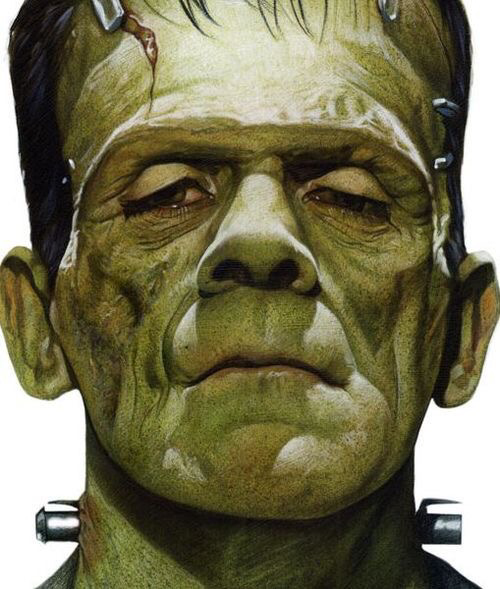
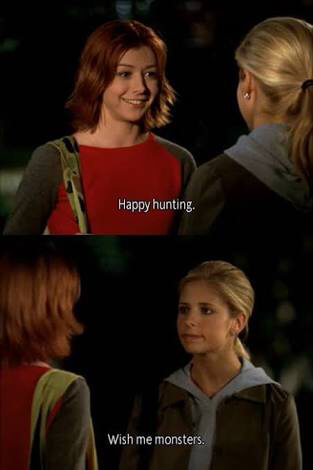
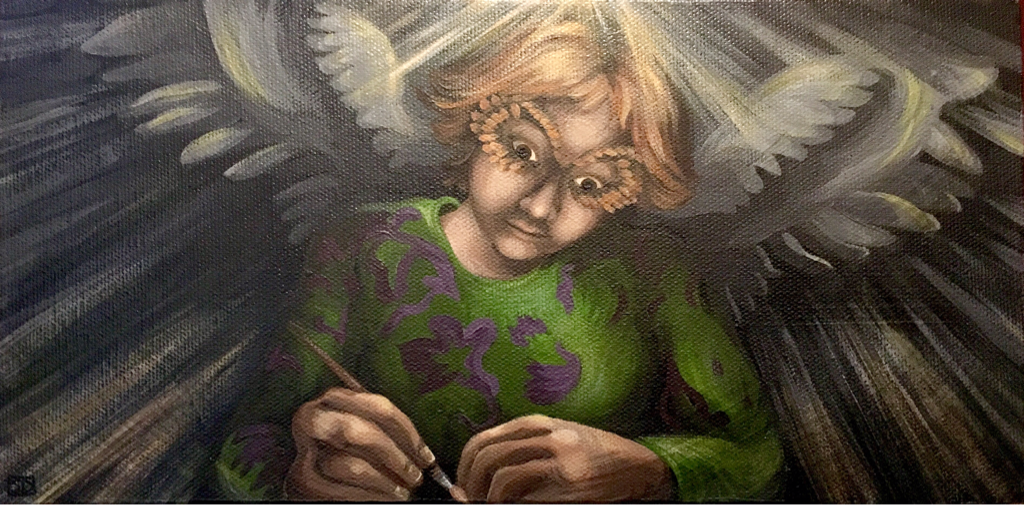
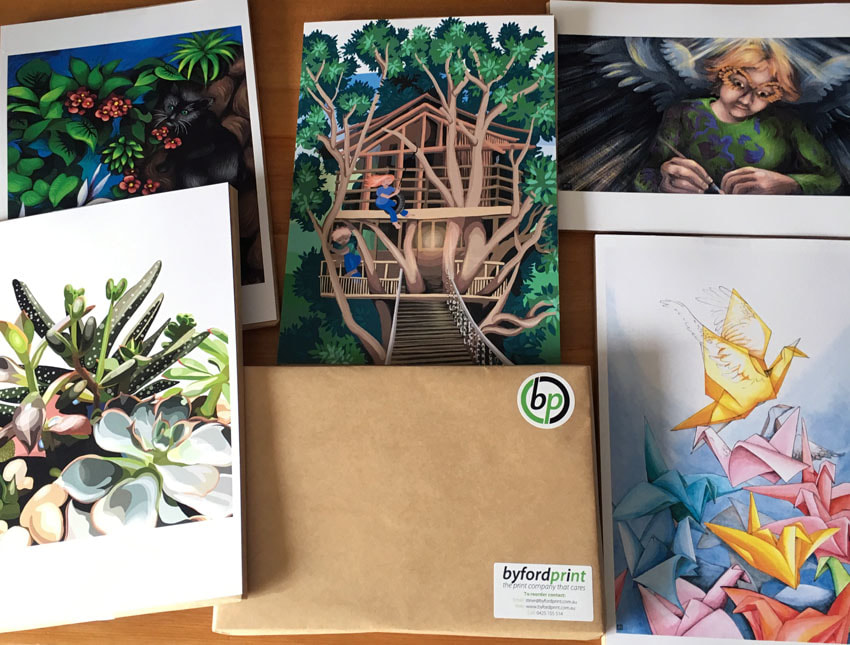
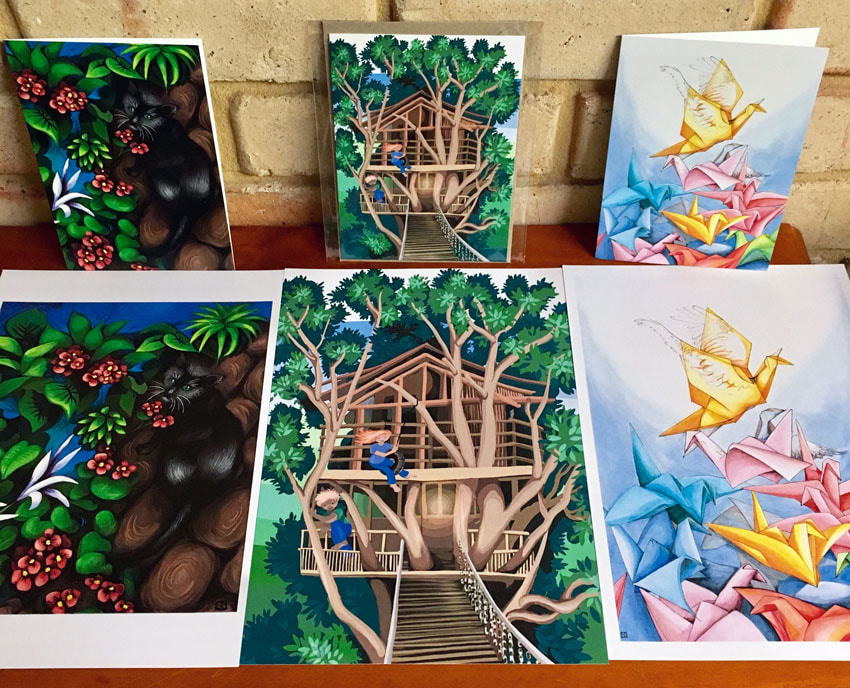
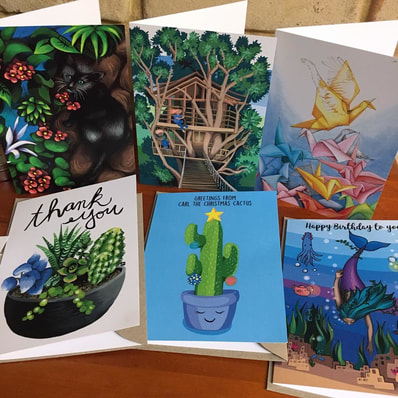
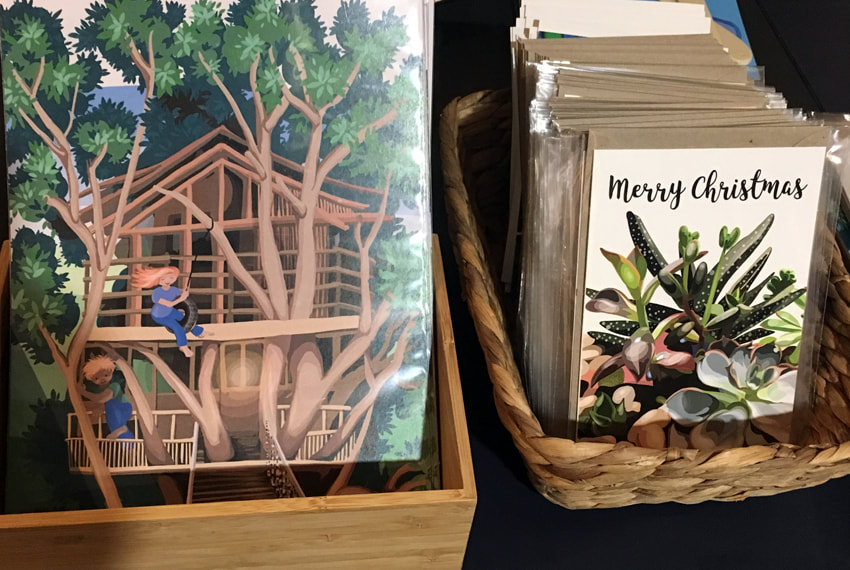
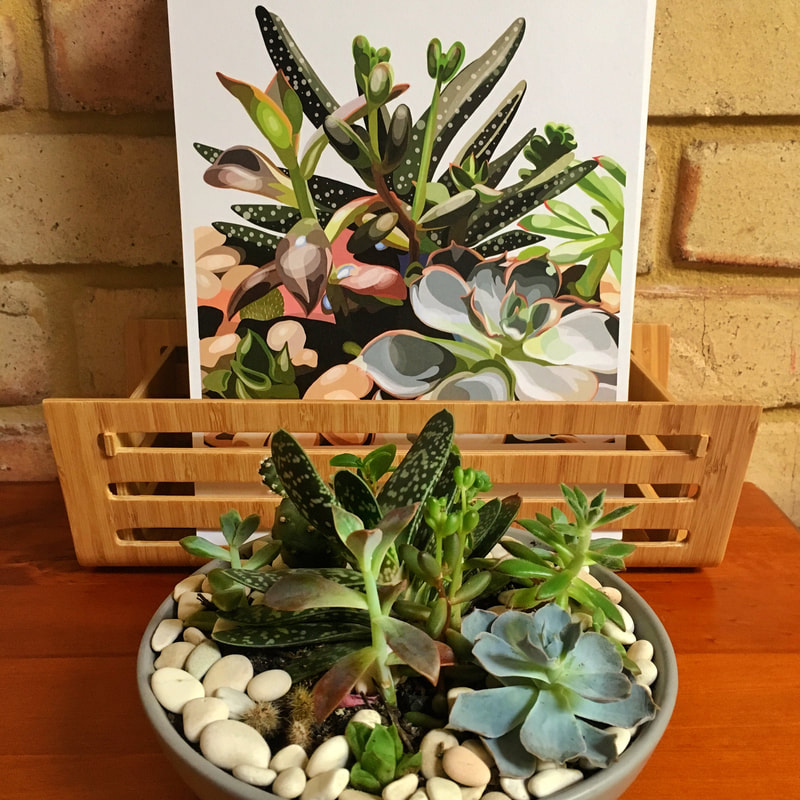
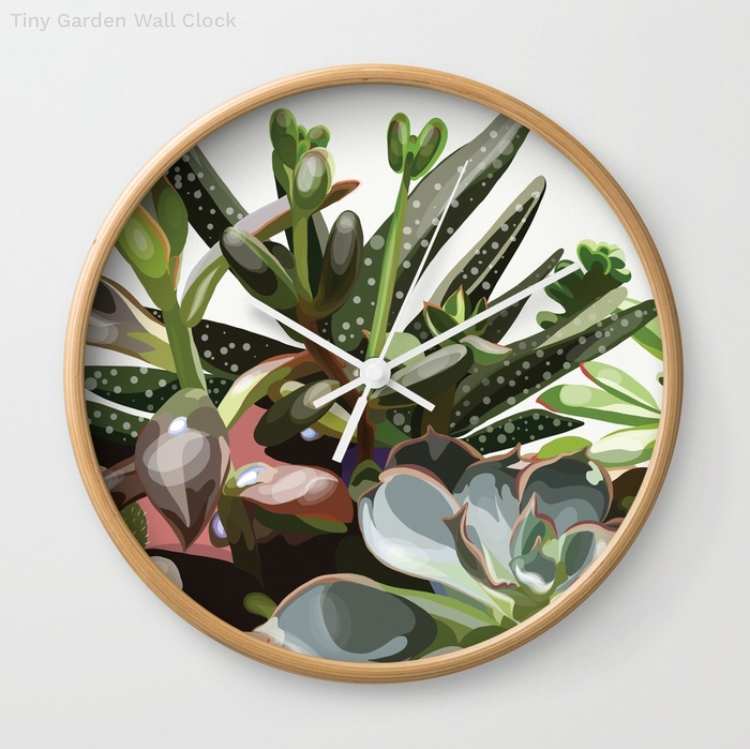
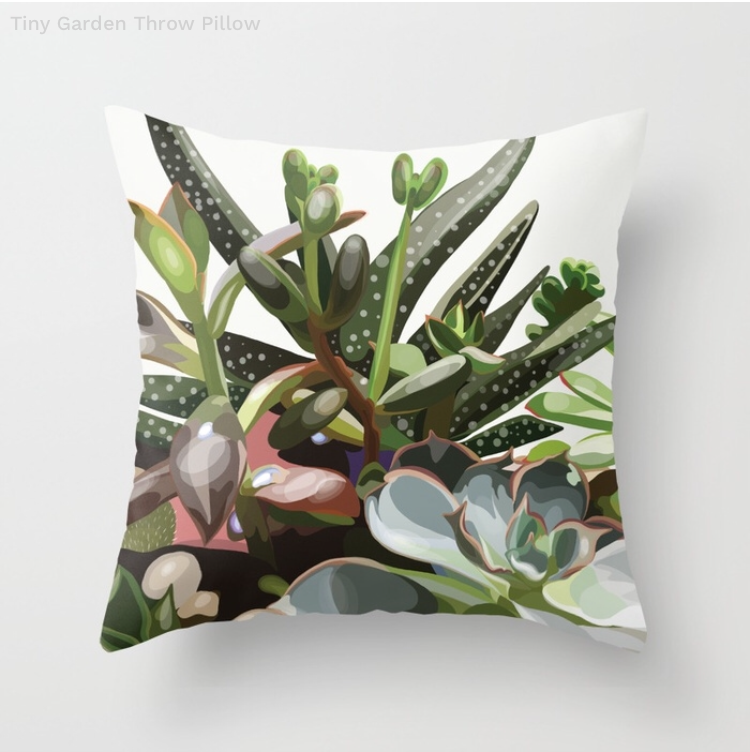
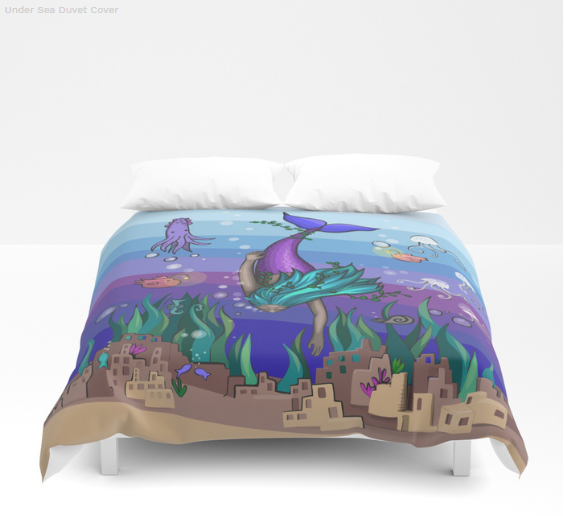
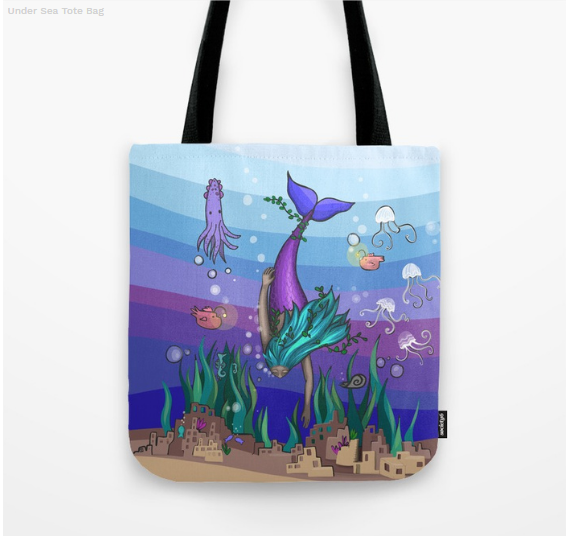

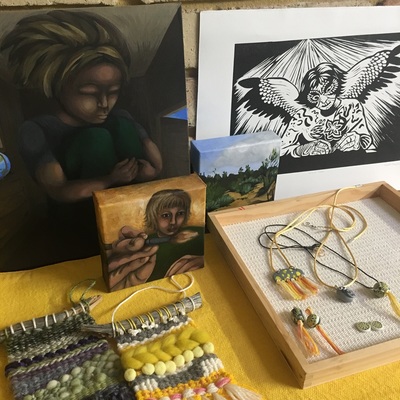
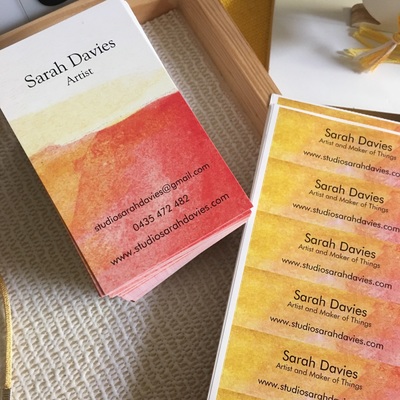
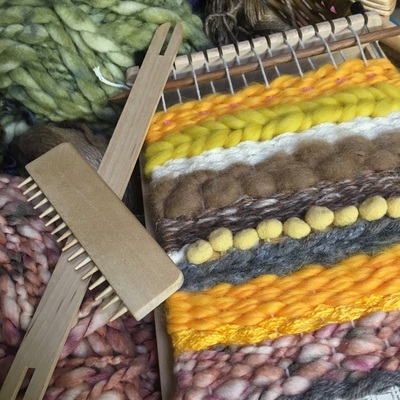
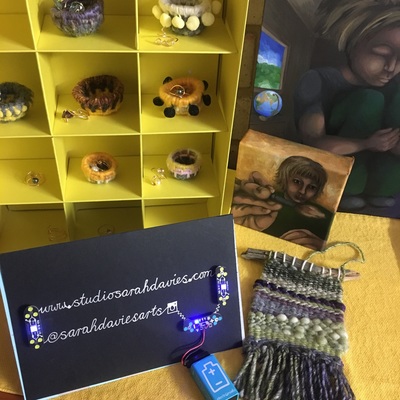

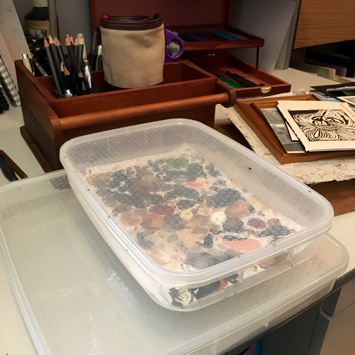



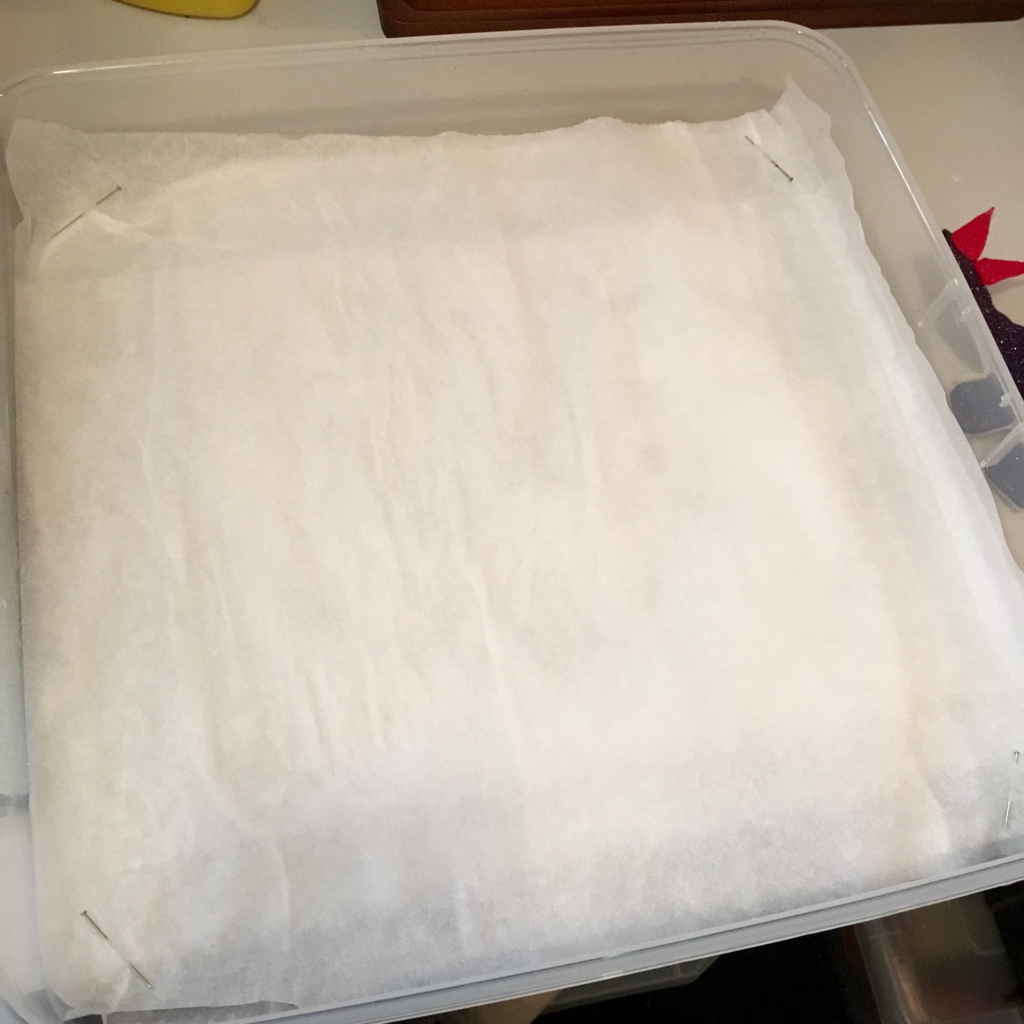
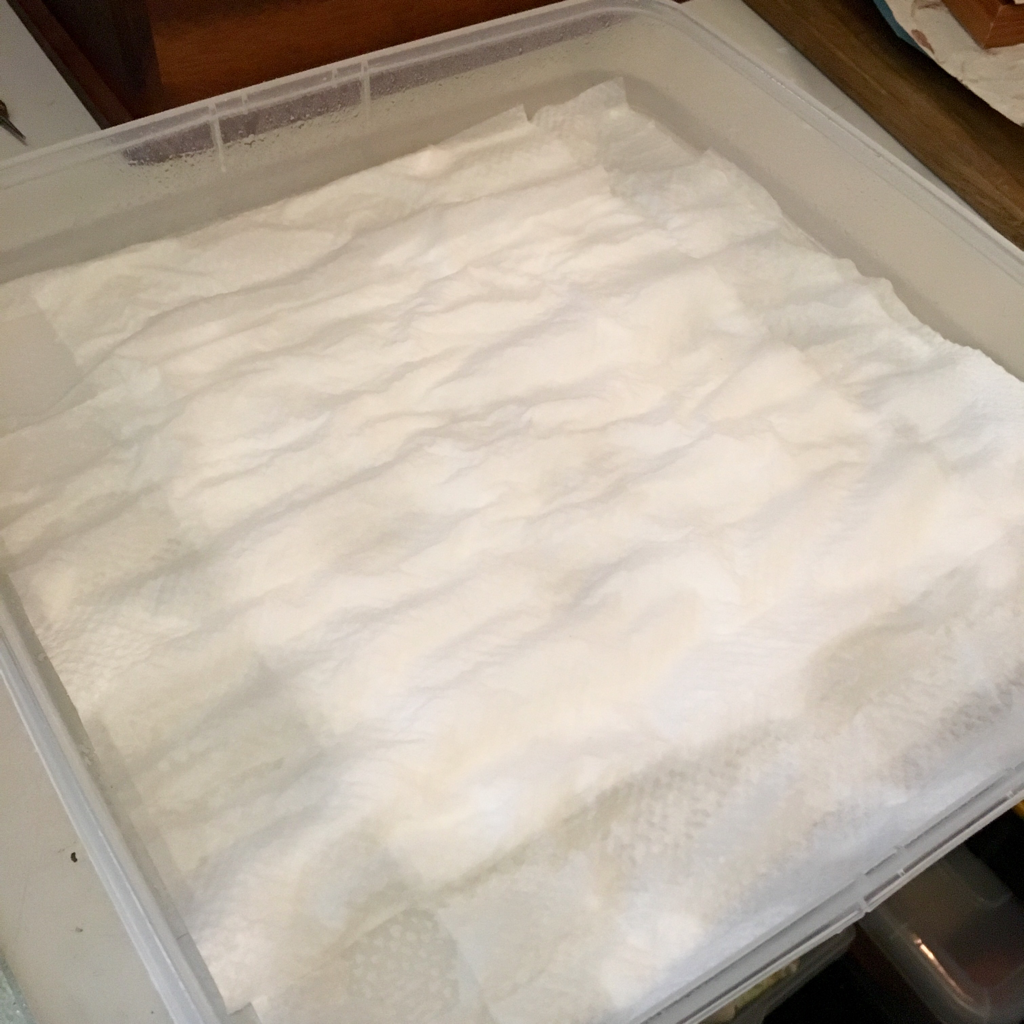



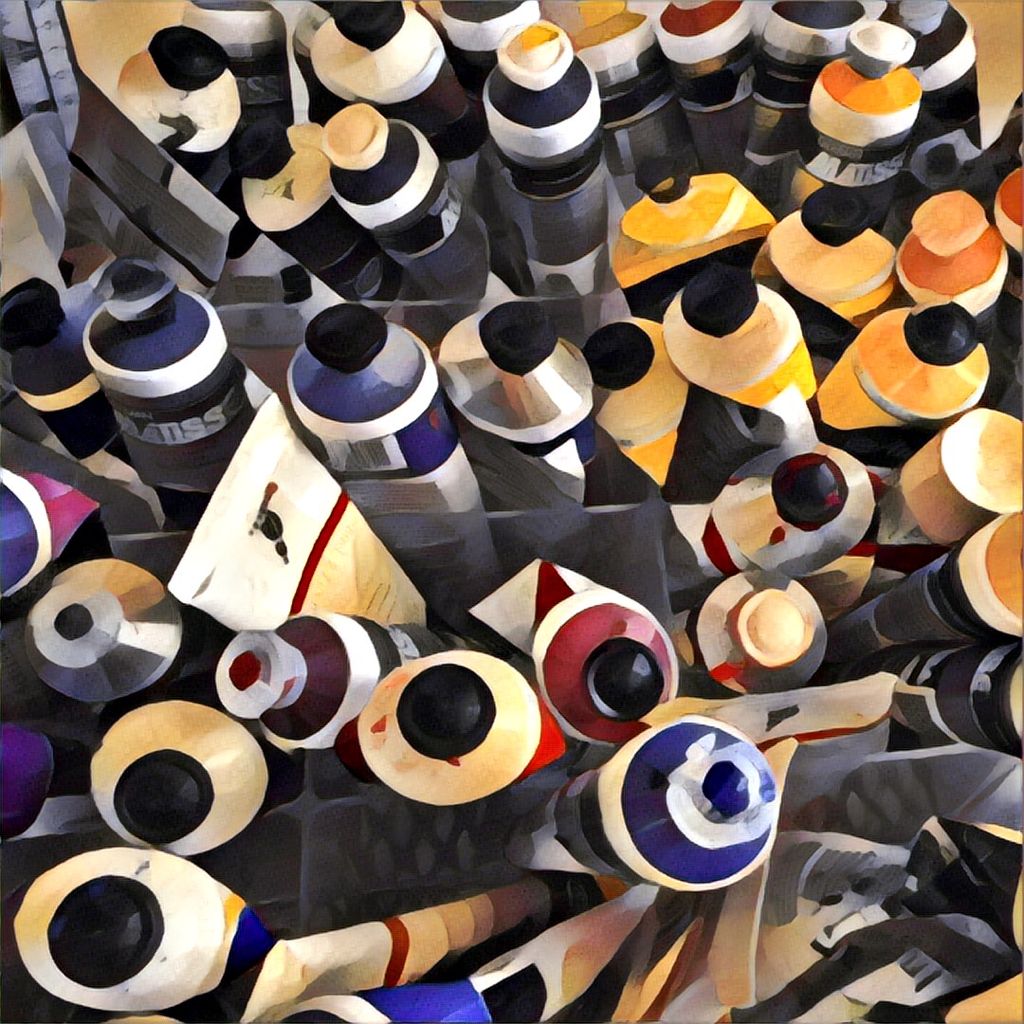
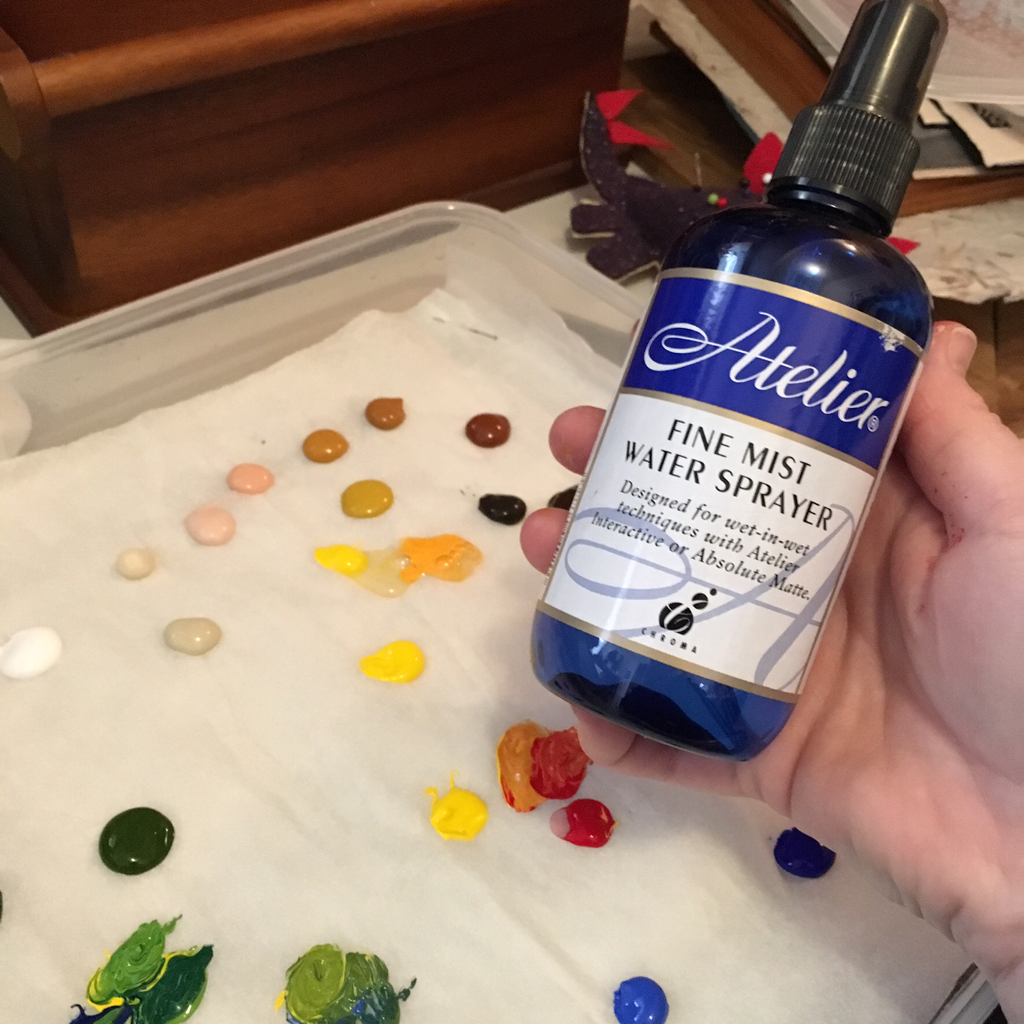
 RSS Feed
RSS Feed